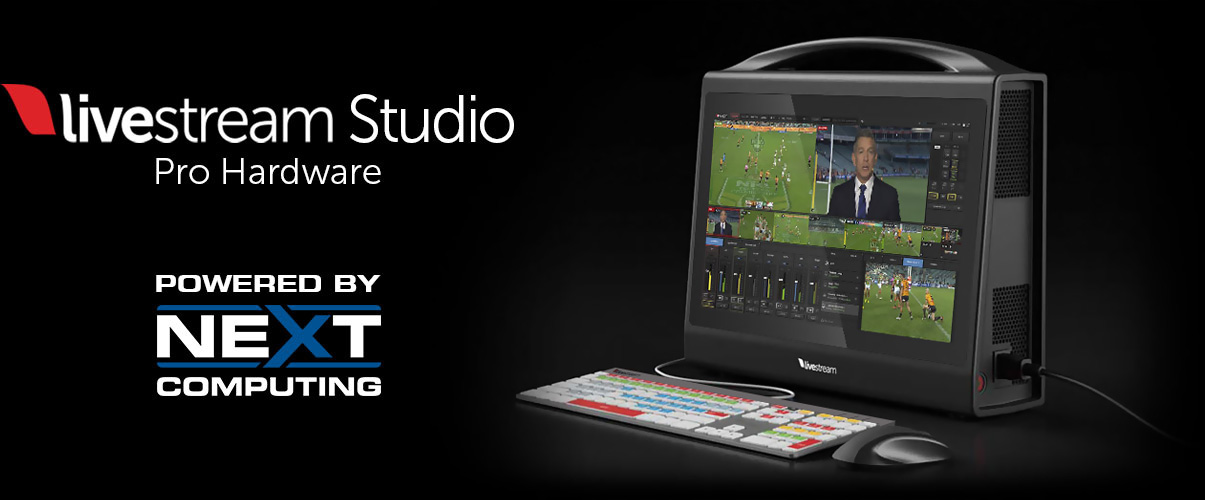
Video has become a pervasive part of everyday life in recent years. From streaming shows on Netflix, to watching friends’ shenanigans on TikTok, to video conferencing at work, video is now a given part of our day-to-day lives. So much, in fact, that Cisco projects that video will make up 79% of all internet traffic by 2022.
Live video is becoming a new norm, and that’s no hyperbole: the industry saw nearly 1.2 billion hours of live streaming video in 2019, according to a report from StreamElements. This trend has only accelerated further in 2020, as Forbes reports social distancing measures have boosted live streaming by at least 12%, and overall internet usage by 70% as we spend more time at home.
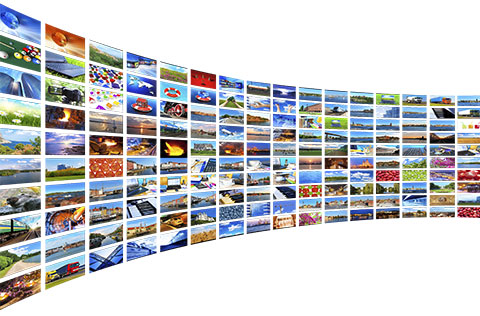

Businesses are taking notice and acting on these new trends. Rather than playing catch-up and coming across as “behind the times,” organizations are opting for live video now. In fact, one report found that 53% of companies intend to increase their budget for live streaming events, and even executives prefer video over other forms of communication. If you’re a business looking to invest in video, there are myriad live streaming video options, from free services like Facebook to enterprise-grade solutions that can cost upwards of six figures. Determining which service is best for your business depends on a number of factors, all of which we’ll dive into in this guide.
When deciding how much to budget for live video, you’ll want to know:
-
Why video matters for your company as a whole
-
Which features are best for your streaming needs
-
What equipment, software, and hardware you need to stream
-
How much support you’ll need to make your stream a success
Today, every company is a media company
As our lives have moved increasingly online, so have the ways in which we work. The most recent report from the Bureau of Economic Analysis reports that U.S.-based businesses employ 42.3 million workers abroad, and the work-from-home labor force has tripled in the past 15 years. Even more recently, companies have been forced to adapt quickly to remote work setups to keep their employees healthy and business humming. With a growing global workforce comes unique communication challenges (juggling multiple time zones, anyone?). When organizations need to keep members engaged, no matter their location, there’s no better solution than video.
Video now serves a much broader purpose at organizations than, say, traditional video conferencing. Here are just a handful of examples of how video spans industries to support their vision, mission, and goals:

Business
- Virtual events (substitution for face to face conferences and exhibitions)
- Virtual sales meetings (including visual live demonstration of products)
- Corporate communications
- Remote training
- Marketing

Education
- Graduations and ceremonies
- Online learning and lectures
- Sporting events
- Plays and recitals

Government
- Remote training
- Agency communications internally and to the public
- Virtual press conferences
- Online rallies
- Public hearings and events

Faith
- Live streamed weekly sermons
- On-demand sessions and services

Nonprofits
- Panel discussions
- Research seminars
- Online fundraisers

Arts & Culture
- Online film festivals
- Live streaming concerts
- Panel discussions with live video from location to expand subscriber base (where physical attendance is reduced)
Video For Business
NextComputing’s Livestream Studio products are closely integrated with Vimeo and its ongoing growth as the single go-to video tool for businesses of any size.
Every business should be using video for internal and external communications, marketing, training and more. While companies are scrambling to build up these digital channels now, tools like Vimeo and Livestream Studio systems make setting up this infrastructure easy for businesses of every size, giving you instant access to create, collaborate, and communicate with video.
Utilizing video for business is something that will be a key factor for success, even in a post-pandemic world. Let NextComputing help you build your video success story now.
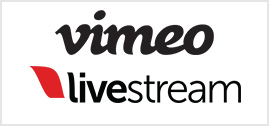
Live broadcasting vs. video conferencing
“Live streaming” is such a broad term, it can be hard to figure out the best solution given the vast number of options available. One question many people ask Vimeo is, "What is the difference between live broadcasting and video conferencing? How do live broadcasting platforms like YouTube or Facebook differ from video conferencing platforms like Zoom and WebEx?"
While there’s no one-size-fits-all answer or approach, we can lend some guidance with three essential questions that should inform your decision:
Who are you trying to reach?
Defining your audience is priority number one, and will influence the following questions, too.
How do you need to reach them?
Do you need secure access? Simulcasting to social media? Embedded on your own site?
How will your audience interact?
Engagement fosters a closer sense of belonging during a virtual event.
Based on the answers to the above questions, this checklist offers a snapshot of high-level differences between live broadcasting and video conferencing to help you determine if one may be better suited to your needs.
![]()
Live Broadcasting
-
Optimized for one-to-many delivery
-
Offers improved visuals
-
Better storage, sharing, and management
-
Better and more reliable at scale
-
Text-based interactivity
-
Heightened security
![]()
Video conferencing
-
Optimized for one-to-one video interaction
-
Does not scale to large audiences
-
Can be tricky to access and secure
-
Limited quality outputs
-
Not built for long-term storing or sharing
Of course, your needs may very well be a hybrid of both. In those instances, it’s important to find a video solution that has the flexibility and technical power to accommodate unique workflows and setups. (Yes, they exist, and yes, we’ll explain!).
Consumer vs. Vimeo Premium and
Enterprise professional streaming services
Over the past few years, major social media platforms democratized and commodified live streaming, with YouTube Live launching back in 2011, and Facebook, Twitter/Periscope, Instagram, and others (R.I.P. Meerkat) following suit. Last year, consumers gobbled up TikTok as downloads ballooned to 1.5 billion, and businesses and working professionals leaned in to LinkedIn’s new live streaming offering.
These free platforms are great for brands and businesses looking to dip a toe in the live streaming pond, but they are not viable solutions for long-term scale and growth of a video strategy. Why? While ease of use is a major draw, for sure, none offer onboarding or robust customer support. If your team hits a snag with an event, you’re left to your own devices to problem-solve in real time.
What’s more, streaming is only possible on a platform-by-platform basis. This means if you want to stream to Facebook and Twitter at the same time, you’ll need two cameras to live stream from each device — creating twice as much work (or more) and a less-than-ideal experience for on-screen talent and viewers alike. Finally, as with any social network, advertisements abound, including pre-roll ads on YouTube. It’s a challenge for any organization to create an on-brand experience for their audience with ads disrupting their content.
Benefits of professional-grade video streaming
Customer support when you need it
Simulcasting + streamlined workflows
Security + privacy
Ad-free viewing experience
Improved video streaming quality
How to budget for professional live streaming
While live streaming requires a financial investment, there are other costs to consider, too. Live streaming takes time: to create content, plan logistics, and produce the event. Live streaming also takes an investment of effort, particularly when first starting out.
To help you get an understanding of what goes into a professional live stream, consider these four steps. You’ll need to factor them in as you evaluate the size and scope of your budget.
| 1. Capture |
Livestream Studio HD550, HD51, or Studio One appliance to display your audio and video outputs. Depending on your needs and budget, you can use tools you likely already have — like your phone’s camera and microphone — all the way up to professional-grade equipment. We’ll outline suggestions in this section to help you determine what suits your budget. |
|---|---|
| 2. Encode |
Livestream Studio HD550, HD51, or Studio One appliance to convert your outputs into a live streaming format. Again, depending on your needs, you may not need hardware, and the software you use can vary from consumer-level offerings (like Facebook Live), to leveraging professional software like Livestream Studio 6. |
| 3. Distribute |
Distribution is an imperative part of any live stream, and will vary based on your content and audience. If you’re looking to reach a wide, public audience, you may want to simulcast to social media. If your live stream involves sensitive or proprietary information, you may need a platform with more security options like hosting the video on your own domain, or using single sign-on (SSO) for secure access. |
| 4. Engage |
Methods to turn your live stream into a two-way street with tools like live polls, Q&A, and chat. |
Gear up with hardware
What does it take to put on a great live event?
While some might say magic and elbow grease (can’t argue with either of those), a solid live streaming equipment setup is pretty crucial too. Vimeo’s video production teams have produced hundreds of shows and stories for businesses around the world, and they had some great suggestions for gathering the equipment you need to capture beautiful video and audio from wherever you are.
Lighting
You want your on-screen talent to shine — literally. That’s why getting the lighting right can create a warm and welcoming atmosphere.
Beginner
The sun!
A light reflector or bounce
Ring light
Aputure MC
Intermediate
Neewer ring light kits
GVM 560AS LED 3-Panel Kit
Advanced
Aputure 300 d II with mini dome diffuser
Cameras
Of course, cameras are critical for any video production. Depending on your budget and type of event, you could try anything from a small webcam to professional-grade cameras. Don’t let fancy camera models intimidate you, though! Vimeo’s Senior Manager for Live Production, Tom Gott, says that consumer-grade cameras can work great, too.
Beginner
Your phone!
DJI Osmo Action
GoPro Hero
Panasonic LUMIX GH4
Sony PXW-FS5
Logitech C930e
Sony A7 II
Intermediate
Mevo START
Canon XA15
Canon XF100
Sony PXW-Z90
Advanced
Sony PMW-300K1 or PMW-X320
Audio
Research shows that no matter how good your picture is, if your viewers have a poor audio experience, they’ll be quickly disengaged. Here are some tools to help capture crisp sound from the get-go.
Beginner
Shure MV88 digital stereo condenser mic
Rode VideoMic
Topaz DeNoise AI audio software
Yeti Nano USB mic
Intermediate
Rode Procaster
Shure SM7B
Advanced
RodeCaster Pro audio mixer
Encoding Kit
If you’re well-versed in production gear, you might have your lighting, audio, and camera gear already set. In that case, you might be ready to add an encoding kit into your streaming repertoire.
An encoder is a piece of hardware or software used to convert a live feed or pre-recorded video so that it is viewable over the Internet via computers and mobile devices. But to get the most out of your encoder, you’ll need additional gear to create a professional-grade setup.
Beginner
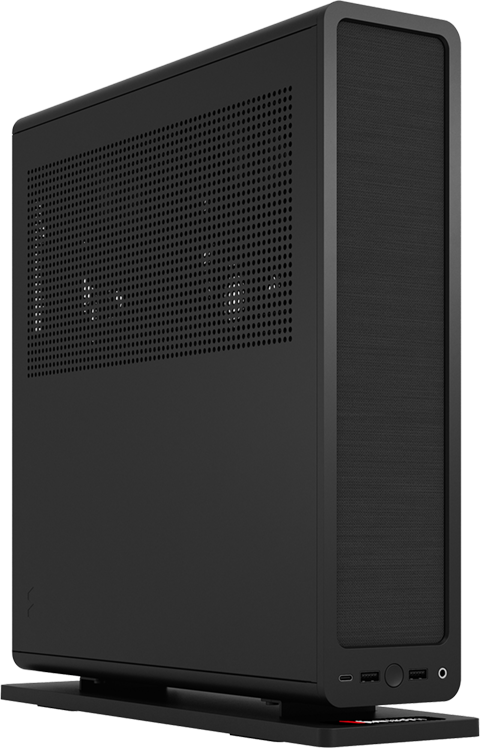
Intermediate

Advanced
Livestream Studio HD550
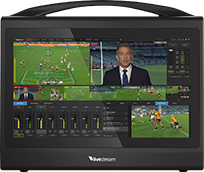
or Livestream Studio HD51

+ NETGEAR GS105 5-port network switch
+ BNC, Cat 6, and HD-SDI cables
ADD A VIRTUAL SET AND 2D GRAPHICS
Load virtual sets into Livestream Studio to create a professional-looking 3D backdrop for your live video event or virtual conference. Virtual sets are another easy-to-use tool that users of Livestream Studio can leverage to create and distribute sophisticated video content. Each virtual set has 16 camera angles and can be utilized with other Livestream Studio features such as remote guest feeds and Zoom meetings.
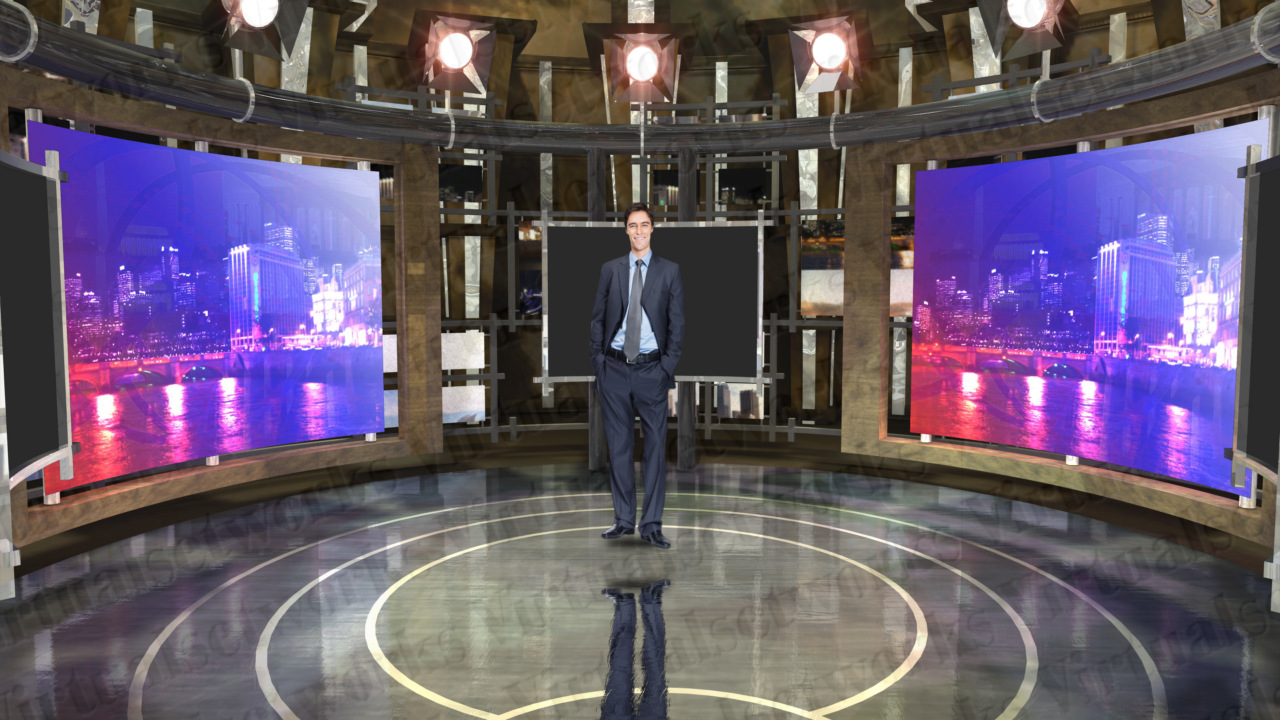
Add free downloadable lower third and scoring graphics into Livestream Studio to create a professional-looking 2D graphics.
If you need customized virtual sets or 2D graphics, please email sales@nextcomputing.com with a basic written description and or pictures, and we will provide a quote to take your vision and implement your graphics in your timeframe.
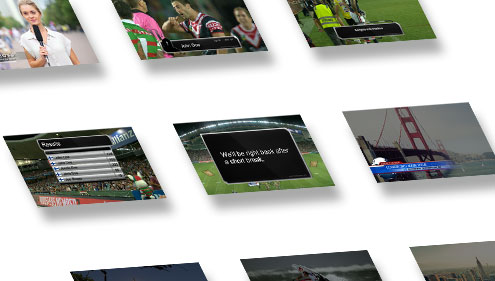
Choose your streaming platform
There’s no shortage of streaming platforms on the market today, so finding the right one can be overwhelming, especially if you’re just starting out with live streaming yourself. One way to make the evaluation process easier is to have a list of must-have features, as well as ones that you could compromise on or work around. Some features are common across all platforms, while others may only be found on a select few.
To help you sort through the noise and get clear on what matters to your business in regard to live streaming solutions, here are seven key factors to consider when researching the right live streaming platform for you.
Michael Mehlhorn
Multimedia Director, Splash
8 Factors to Consider
1. Streaming quality and playback
While a high streaming video quality offers a sharper image for your audience, it also requires more internet bandwidth from your viewers to watch it on their devices. A platform with adaptive bitrate streaming can alleviate this risk by automatically adjusting the streaming quality based on their connection speed.
For those large organizations, an enterprise content delivery network (eCDN) can provide further viewing support by redistributing bandwidth from a single internal network to local, internal networks data centers. If you’re streaming to multiple business locations around the world, eCDNs can boost the viewing experience for your employees, and alleviate strain on your own networks — a win/win.
2. Privacy control
If your live stream contains sensitive information like business financials or product roadmaps, you may require added security to ensure your content is seen only by those within your organization. Turnkey security solutions like single sign-on (SSO) offer solid security while making it easy for your employees to access.
Other options include domain and embed restriction features, like making a video only visible on a company intranet, private link sharing, or password-protected videos.

3. Audience engagement
For many, a successful live stream includes facilitating discussion from the audience. If that’s true for you, find a streaming platform that includes various ways to engage your viewers in real time — tools like live Q&A (and moderation), polls, and chat are all helpful to turn your live stream into a two-way conversation.
4. Accessibility
Everyone should be able to enjoy your video, whether watching, listening, or reading. A streaming platform that supports live and on-demand closed captions and screen readers are key factors to ensure adherence to accessibility. (Vimeo’s player meets WCAG 2.0 AA standards for accessibility.)
5. Content management
Just because your live stream ends, it doesn’t mean its use does, too. Video on-demand (VOD) is an important part of your video strategy to make sure anyone can watch your video, even if they missed the live event. Automatic archiving makes managing your live stream even easier, by skipping the manual process of downloading a live stream, uploading it to a new location, and then redistributing it.
You’ll want to make sure you have plenty of digital space, too. As much as we’d like to Marie Kondo our online storage, the reality is that video files are quite large compared to many other files we use online. To that end, your platform should have ample storage space, with the option to add more as your video content library grows.
6. Customization
A streaming platform that offers flexibility in how it looks, where you use it, and what you can do with it means better value for your budget. Customizing your video player with white labeling, tailored brand colors, and custom thumbnails creates a unified viewing experience.

7. Analytics
Having your video analytics all in one place will make measuring the effectiveness of your video more efficient, especially when you publish your video across multiple social media platforms. Understanding who’s tuning in, from where in the world, and on which devices can also help inform your content strategy and video success. If your company relies on Google Analytics for tracking, you may require a video platform that integrates with your existing GA infrastructure, too.
Retroactive analytics are handy for seeing how your video performs over time, but when you’re live streaming, knowing what’s going on as it happens is essential, too. Note whether the platforms you’re considering have stream health monitoring to help you pinpoint any snags in your stream (and fix ‘em on the fly).
8. Distribution
We mentioned this earlier, but it bears repeating: it’s important to have options with how you can distribute your video around the web. Consider whether you’ll need to simulcast across social media, stream via RTMP, or both!
Platforms that have native integrations with popular sites like Facebook, YouTube, and LinkedIn will make distribution more streamlined and less of a logistical hassle. What’s more, having the option to embed your video anywhere puts distribution control in your hands.
How to choose a live streaming platform
What are live streaming must-haves?
When you’re finding the right live streaming solution for your organization, there are a few things you want to keep in mind — but at a minimum, you’ll want to make sure that your platform can:
- Reliably maintain a live stream for an extended period of time
- Offer some kind of private viewing experience (e.g. private links, password-protected videos)
- Track streaming metrics so you can understand who tuned in, where from, and for how long
- Include a service-level agreement (SLA) that guarantees uptime

All in all, most professional-grade live streaming solutions that tick these boxes start in the low 5-figures. For a more detailed overview of leading competitors in the live streaming market, read this.
Additional Features and Functions
For many businesses and organizations, “bare minimum” can be a bear to manage in the long-term. That’s why many platforms built to support the streaming needs of businesses include several other benefits to help.
![]()
Support Packages
While any professional live streaming platform will include some level of support (email or phone), it can take much longer to get a response to your inquiry. Time is of the essence with live video, which is why many video solutions offer premium support like a direct line to an actual human in record time.
![]()
Security
Even if you have your stream behind a private link, or password-protect a video, your content can still be seen by prying eyes that get a hold of the URL or password. If you’re sharing sensitive content that should be seen by your team only, you may require added security features, like authenticating access through single sign-on (SSO).
![]()
Production Services
When your live stream is no-fail, bringing in a team of live streaming experts can bring peace of mind and professionalism to your event. Some solutions include the option to partner with their experienced in-house live production team. This streamlines the live event as you’re purchasing your platform and on-site support through one company.
![]()
Bandwidth Offloading
If your organization brings in live viewers from around the world within one network, you may need an enterprise content delivery network (eCDN) as part of your purchase. eCDNs are a bit technical (more on that that here), but they essentially up stress on your internal networks, creating a better viewing experience while using less bandwidth.

These add-ons can range widely in price — anywhere from a couple thousand, to tens of thousands of dollars — and can be based on company size, the scope of your live event, number of viewers, among other factors.
Streaming needs based on company size
Vimeo supports over 1.3 million paying subscribers, so we’ve come to get a feel for what businesses need based on their size and scope. For those in need of a professional live streaming platform, we’ve found these benefits to be most vital, based on company size.
| Business Size | Authentication | SSO | Live Production Services | Reliability (eCDN) |
|---|---|---|---|---|
| <100 Employees | ||||
| 100-999 Employees | ||||
| >999 Employees |
Bring in the experts
Need help with your live event? You may want to consider production services. Some enterprise customers prefer to have the confidence of knowing their live event is in the hands of a professional services team. If you can’t do it yourself, Vimeo’s award-winning production services team can do it for you.
Below, you’ll find a high-level offering of our available services. As always, we’ll work with you to create a custom solution that suits your needs and budget. Learn more about Vimeo’s live production services
Live Production Packages
| Training |
Service: Our producers conduct a hands-on, bespoke workshop tailored to your company’s needs, goals, and skill levels. Using your company’s own equipment, trainings typically last a full day (8 hours), and prepare your team to confidently live stream an event on their own. Best For: Customers with in-house teams to live stream an event, but need to learn Vimeo’s solutions |
|---|---|
| Virtual Support |
Service: As businesses shift towards virtual events in light of travel restrictions and social distancing measures, our team offers consulting and guidance to your production team to ensure a smooth live stream, even if your team and talent are distributed while working from home. Best For: Customers with in-house production teams, but require input on workflows from a remote setup. |
| On-Site Support |
Service: We’ll be with you on the ground before and during your live event, serving in an advisory role for your production. We’ll be hands-off — letting your team run the show (literally) — and provide guidance and lend expertise whenever you need it. Best For: First-time customers looking for peace of mind during an event |
| Switch & Encode |
Service: Have cameras and mics, but need help with live streaming tech and producing the online event? Our entry-level Switch & Encode service has you covered. First, our producers will bring primary and backup encoders to live stream the event, and connect them to your camera and presentation feeds. Then, our team puts their storytelling skills to use to cut between the camera feed and presentation feed to creatively tell the story for the audience viewing online. Best For: Customers who already have video equipment in place, but require support to execute the live stream itself. |
| 1 Cam |
Service: All the expertise, support, production included in our switch and encode service, plus one professional-grade camera, and one of our skilled camera operators. We can also provide audio and lighting equipment, as well as a confidence monitor and speaker timer. Best For: Customers who may have their own audio and lighting support, but do not have cameras or professional camera operators. |
| 2 Cam |
Service: The 2 Cam service is just like the 1 Cam option, but… doubled. All the expertise, support, production included in our switch and encode service, plus two professional-grade cameras, and two skilled camera operators. We can also provide audio and lighting equipment, as well as a confidence monitor and speaker timer. Best For: See 1 Cam |
| 3 Cam |
Service: Can you guess what the 3 Cam service involves? Yep, all the expertise, support, production included in our switch and encode service, plus three professional-grade cameras, and three skilled camera operators. We can also provide audio and lighting equipment, as well as a confidence monitor and speaker timer. Best For: See 1 Cam |
| Full Production Service |
If your event is of a larger scale and requires four or more cameras, you may need our Full Production service. Our Full Production services allows you to unlock many other possibilities not listed in this table. As a benchmark, it includes everything in the 3 Cam service, but with additional cameras and staff. As always, we can provide audio and lighting equipment, as well as a confidence monitor and speaker timer. Best For: Customers who are hosting complex events, at a larger scale, where 3 cameras just won’t cut it. |
Which Solution is Right For You
We hope this guide has helped give you an idea of just how much goes into preparing for a live streamed event. A successful live stream is made up of many more moving parts than simply hooking up a camera and going live. It’s a delicate balance of content, on-screen talent, technology, timing, and cross-communication through and through. (And when all of those factors are within the context of your business, you should tack on privacy and security, too.)
Here’s how we’re seeing different industries prioritizing the key factors we shared earlier in this guide.
| Feature | Businesses | Education | Nonprofits | Faith | Government | Arts & Culture |
|---|---|---|---|---|---|---|
| Audience Engagement | ||||||
| Privacy & Security | ||||||
| Ad-free | ||||||
| Simulcasting | ||||||
| Support | ||||||
| 1-to-many live streaming | ||||||
| 1-to-1 live conferencing |

